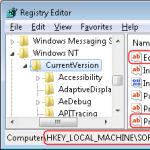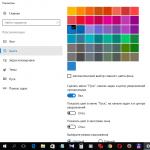A small driver backup program that does not require installation. It allows you to find all the drivers installed on your PC and save them for later restoration after reinstalling the system. Its main feature is the ability to save drivers not only for a running system, but also for an inactive or even inoperable one!
Reinstalling the system is a simple matter, but quite troublesome. Firstly, you need to copy all the necessary information (documents, photos, music, etc.) to backup media in advance.
Then you should take care not to forget the bookmarks and passwords saved in your browsers. You may also need to save the necessary configuration files for various applications...
And it often happens that everything seems to be saved, the system has already been reinstalled, but it turns out that the driver disk for your PC or laptop has disappeared somewhere! Has this ever happened to you?
If you have access to the Internet, then you can somehow get out of this situation (although you will spend a lot of time downloading new drivers). And if not? Then you will have to look for the necessary disks from friends or somewhere else :).
But it turns out that all these troubles can be avoided quite easily by making backup of installed drivers! And an excellent free program will help us with this. Double Driver.
Comparison with a paid analogue
Double Driver does not have rich functionality, but it copes with its main task with a bang - it saves installed drivers and helps to restore them on a new system. The paid My Drivers utility has similar capabilities:
From the comparison it is clear that the paid application has a little more features than Double Driver, but all of them (with the exception, of course, of the ability to download drivers from the Internet) are practically useless. But our free program also has its trump cards.
Firstly, Double Driver can search for drivers even on an inactive system (can be a big help when working with LiveCD)!
And secondly, it allows you to save logs of your work and lists of detected drivers. This can help advanced users find the drivers they need online.
Getting started with the program
Double Driver does not require installation, so to start working with the program, simply unzip the folder with it to your hard drive and run the file dd.exe:
![]()
The program interface is in English, but quite simple, so it does not require translation for the most part. The application window consists of two parts: a toolbar with functional buttons and a work area.
When loading, we find ourselves in the “Home” section, where we can see the program’s event log, save it to a text file or print it on a printer. In this section, the “Select” button is inactive, since there is nothing to choose here :).
Backing up your drivers
To view the list of installed drivers and back them up, we need to click the second button on the toolbar - “Backup”:

In order to get a list of drivers, you need to click the “Scan Current System” button.
However, as I mentioned above, Double Driver can also search for drivers in inactive system directories. To do this, use the “Scan Other System” button. This function will be useful if you have several operating systems on your hard drive (for example, XP and 7).
You just need to specify the folder with the desired OS and scan it without having to download it!
By default, the list will highlight all drivers that are not included with Windows (although all standard drivers are present!). Using the “Select” button, you can quickly select all drivers, deselect them, or invert the selection (that is, select all drivers from Microsoft).
Naturally, you can also select the necessary drivers manually using the checkboxes to the left of the name.

So, using the “Select” button (the “None” item), we remove all selections, mark only the item we need, and then press the “Backup Now” button. The following window will appear in front of us:

Here we can select the folder to save the driver (section “Destination”) and the format of saving itself (section “Output”). As for the latter, we can save the drivers:
- In the format of structured folders that will be used by the program for recovery;
- In zip archive format, which can also be used for recovery using Double Driver;
- In an executable file format that can be used separately from the program as a standalone installer.
Select the desired saving format (I chose the first one) and click the “Ok” button. After some time, the backup copy will be ready!
Driver recovery
For the purity of the experiment, I completely removed the drivers of the tested network card from the system and now I will try to restore them using Double Driver.
To switch to driver recovery mode, you need to click the third button on the toolbar - “Restore”:

Click the “Locate Backup” button and in the window that opens, select the option for the location of our driver (or drivers, if you copied several at once). There are also three recovery options available here:
- Restoring from the default folder (My Documents) will suit you if you did not change the backup location when saving the backup copy (section “Destination”);
- You will need to select Restore from archive if you selected the second option (archiving) when creating a backup copy;
- We will need to restore from the specified folder (I used it) if we changed the default backup storage folder.
If you have chosen the correct location, you will see a list of drivers available for installation:

We mark the items we need and click the “Restore Now” button. The standard Device Driver Installation Wizard will launch, which will automatically configure the system properly and prepare our hardware component for operation:

After completing the installation of the driver backup, the system successfully detected my network card and I was able to restore all my settings to it without much effort. The test showed that Double Driver works quite correctly, which is what we need :).
Additional features
In fact, there are no special additional features in Double Driver. The only thing the program can do beyond the functionality described above is save logs of its work and lists of found drivers.
Such information can be useful for advanced users or system administrators, as it allows them to immediately see all components installed on the system.
To use this function, you just need to click the “Save” button on the tab with the required data. So, in the “Home” tab we can save the Double Driver operation log, in “Backup” - a list of installed drivers, and in “Restore” - a list of reserved ones:

For example, in the screenshot above we can see a fragment of the saved list of installed drivers. In it, in addition to, of course, the name of the device, we can see the date of the last driver update, its version, class and identifiers (ven and dev), with which you can find all the software for the selected device!
Advantages and disadvantages of the program
- no installation required;
- the ability to select any drivers (including system ones) for backup;
- backup of drivers from an inactive system;
- creating backup copies of drivers with automatic installation;
- saving a list of installed drivers to a text document.
- It is not possible to download drivers from the Internet.
conclusions
Double Driver is a simple workhorse for backing up installed drivers. However, this “horse” can sometimes help even in situations when other backup “monsters” are powerless.
For example, I have not yet come across a program that would be able to save all the drivers from an already “fallen” system. And Double Driver, thanks to its portability and the “Scan Other System” function, copes with this task with a bang!
P.S. Permission is granted to freely copy and quote this article, provided that an open active link to the source is indicated and the authorship of Ruslan Tertyshny is preserved.
Drivers are an important component of the interaction between the computer hardware and the operating system and the software installed on it. Therefore, when experimenting with them or updating them, it is recommended to create a backup copy of the already installed drivers, so that if something happens, you can restore the normal operation of the computer. Today we will tell you about a small utility called Double Driver, with which you can quickly make driver backups.
Double Driver is a free program that is, in the truest sense of the word, a driver manager for devices connected to the computer’s motherboard with the ability to back them up. The utility, like a file manager, displays all drivers installed in the operating system in the form of a list, and also allows you to save this list and print it.
The most popular function of the Double Driver utility is the backup of Windows 8, 7, Vista and XP drivers. Most users choose this particular program to work because it is free and the speed of driver backup is very fast. By the way, in just a couple of minutes it can create a complete backup copy of an operating system that has been installed for more than a year, and, therefore, it has accumulated quite a few drivers. In addition, when creating copies, the utility sorts all files into folders whose names correspond to the names of the devices. In addition to sorting by folders, the utility also contains a filter in its functionality that filters all drivers by their developers, for example, from Microsoft, etc.
Backing up your drivers
You can create a backup copy of the drivers installed in the system quickly and in just a couple of clicks using the Double Driver program, which can be downloaded from the link below. The utility does not require installation and can be used on any removable media.
Launch the utility on your PC and in its main window, in the top menu, click on the “Backup” button, then click on “ScanCurrentSystem”, as shown in the figure below.

Next, check the checkboxes next to those drivers for which you are going to make a backup copy, and then click “Backup Now”. You can mark them all if you have doubts that you have marked the right ones.

In the dialog box that appears, indicate to the program the location on your hard drive where it should save the backup copy of the drivers, and also activate the “Compressed (zipped) folder” radio button if you want the copy to be compressed into an archive. In addition, if you need to create a self-extracting archive, then instead of the above radio button, activate “Single file self extract (executable)”. Click “Ok” to start the copy creation process.

Wait until the Double Driver utility finishes its work and informs you about it with a corresponding message.

The created archive with a backup copy of the drivers will be stored in the location you previously specified and will have the name of your motherboard model, as well as the date the backup was created. To restore drivers from this archive, you need to unpack it, then run the installation wizard and follow its instructions and tips.
Usually, when reinstalling Windows, situations arise when you need to restore the most necessary things - this. It's good if you have installation disks with them. This is for the motherboard, video card, sound card, etc. What to do if they are not there, but drivers are needed? You can, of course, resort to the help of the Internet and download what you need from there, but there are situations when either it is not in automatic mode or you need to search the sites yourself at the risk of getting it. Therefore, I will describe to you a method where you can restore old drivers quickly and surely.
I will not describe what drivers are; I will only briefly write that a driver is a kind of utility that “explains” to the operating system what kind of devices are connected to it and how to work with them. If there are no drivers, there will be no normal operation of the devices.
Often, Windows already has minimal and standard drivers preinstalled, even for a video card, but they will not provide full functionality with the computer, so you need to install your own (original) drivers for each device.
I have already written above how to install the “firewood” in the standard way (via the disks that were included with the devices and the “computer”), and now I will explain how to make this process easier and more convenient.
Of course, to solve such a common problem, many methods and programs have already been invented. I will write about one of these programs in this article. The program is called Double driver and you can download it from the tab Downloads by selecting the program itself and one of the download sites
And yet, you don’t have to wait until you need to reinstall the system. You can make this copy of the drivers at any time or once every 2-3 months (whichever is more convenient for you) and save it somewhere on a flash drive or hard drive. Just in case, but it might also come in handy later.
- Hello admin, I want to reinstall the Windows 8.1 operating system on my HP laptop, but I don’t want to bother searching for drivers after reinstalling the system, everything has changed on the HP website and it’s not at all clear how to download drivers there. Is there any way to make a backup of drivers using Windows 8.1 and how to then install drivers from this backup.
- Hello, the question is this: at work on a budget computer you need to reinstall the Windows 7 operating system, on the motherboard website there are drivers only for Windows XP, I can’t imagine where the previous system administrator found drivers for the “seven” for this mother. So before reinstalling the system I need to make a backup of the drivers?
Hello friends, if you want to make a backup of all installed drivers in the operating system, you can use the two methods below. These methods can be very useful to you if your computer contains some rare device, the drivers for which are difficult to find on the Internet. After reinstalling the operating system, you simply indicate to the Windows driver installer the previously created backup and that’s it, but unfortunately not all drivers can be installed in this way, I will also tell you what to do in this case.
For example, on the website of my old motherboard there are no drivers for Windows 8.1 at all, but only drivers for Windows 7, so at one time after installing Windows 8.1 I had to look for drivers for some devices on the Internet, I don’t want to do this a second time, Therefore, before reinstalling the system, I will definitely make a backup of the drivers.
The first way is to use the PowerShell command shell. Windows PowerShell is a very interesting tool for creating scripts for automating user actions in the Windows operating system.
The second way is to use the DriverMagician program.
Let's consider both options.
Creating a driver backup using the PowerShell command shell
Click on the Start button with the left mouse
And choose Search, enter in the input field PowerShell, right-click on the utility that appears and select Run as administrator.

Export-WindowsDriver –Online -Destination I:\Drivers




Create a backup of drivers using the DriverMagician program
Go to the official website of the program http://www.drivermagician.com/download.htm 

Click on the button Back Up Drivers, on the right side of the window all drivers that are not included in the Windows 8 distribution are highlighted in red, check them off and then click on the button Start Backup,

In the window that appears, indicate the storage medium for storing the backup, for example, I will indicate my flash drive and OK.

After a couple of minutes, the Windows 8.1 driver backup is ready and is located on the flash drive in the Drivers Backup folder.


How to restore drivers from a backup
After reinstalling Windows 8.1, go to Device Manager, all devices that do not have a driver will be here with yellow triangles and an exclamation mark. Let's install the driver on the video card. We right-click on our video card and select Update drivers
The issue of manually installing drivers for Windows 8.1 and 10 is less relevant than for system versions 7 and lower. In the evolved operating system, this process is automated, and drivers for the main computer devices are installed themselves during the Windows installation process. The exception may be the latest or rare components. And, of course, various peripheral devices connected to the computer. There are also emergency cases. Thus, certain computer devices (even if they are common components) may be without drivers after installing modified builds of Windows. Another example: we may end up with missing drivers for some devices after an unsuccessful update. Keeping discs with drivers for laptops and PC components is a good tradition, but even if they are lost, an alternative to looking for drivers on manufacturers’ websites is to create backup copies of them in advance and restore them on a reinstalled system.
Backing up drivers, of course, cannot be considered a panacea, since this method of introducing them into the system may be limited by the version and bitness of Windows. But this is a quick way to solve the problem if the same version of Windows (with the same bit depth) is reinstalled and suddenly ends up without a driver for some device. Below we will look at 3 ways to create backup copies of Windows drivers and, accordingly, restore them.
1. DISM (for Windows 8.1 and 10)
Backing up drivers in Windows 8.1 and 10 can be done without third-party software, using the standard functionality - the command line and the DISM tool. First you need to create a folder where backup copies of drivers will be stored. Naturally, this folder should be located on a non-system disk partition or external drive. Its name can be anything, but it must not contain spaces.
Press the Win+X keys and use the menu that opens to launch the command line.
Enter a command like this:
dism /online /export-driver /destination:D:\Drivers_backup
Part of the command “D:\Drivers_backup” is an individual path for each to a previously created folder where backup copies will be placed. After entering the command, press Enter. When the driver backup is complete, you will be notified by the “Operation completed successfully” notification.

If the reinstalled Windows does not have drivers for some components, you need to go to the device manager (a quick access link is available in the same menu when you press the Win+X keys). On a device with a missing driver, right-click and select “Update drivers.”


We register the path of the previously created folder where the backup copies of the drivers were placed, or specify this path using the browse button. And click “Next” to restore the driver of the selected device.

The ability to create a backup can often be found among the functionality of programs for automatically installing drivers. These are programs such as: DriverPack Solution, Driver Easy, Driver Booster Pro, Advanced Driver Updater, Slim Drivers, DriverMax, Auslogics Driver Updater and others. Next, we’ll look at how driver backups are created and how the recovery process occurs using the last two programs.
2.DriverMax
The driver backup function is available in the Free version of one of the best driver managers - DriverMax. Go to the “Backup” section of the program. DriverMax provides two types of backup: the first is the creation of a regular Windows restore point, the second is the export of drivers to an archive file. For cases of reinstalling Windows, of course, you must choose the second option. Select “Create driver backup archive” and click “Next”.



To restore drivers on reinstalled Windows, install the DriverMax program, launch it and go to the “Restore” section of the program. Select the second item, as shown in the screenshot, and click “Next”.

Click the “Load” button and in the Explorer window specify the path to the folder with the exported drivers.


3. Auslogics Driver Updater
Like DriverMax, the Auslogics Driver Updater driver manager provides a paid and free version of the program. Among the capabilities of the latter is Windows driver backup. We go to the “Backup” section of the program, select all or only some individual devices. And click the “Copy” button.


After reinstalling Windows, install Auslogics Driver Updater, move to the “Restore” section and click the “Import archives” link. Specify the path to the previously exported program file.

After that, in the program window, open the list of devices for which drivers were saved. By checking the box, select all or some of them and click the “Restore” button.

Have a great day!



